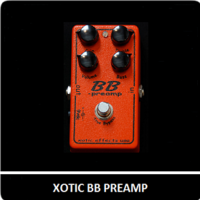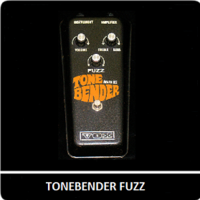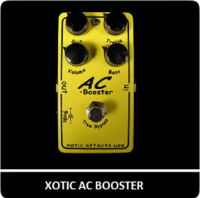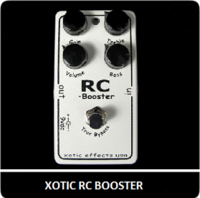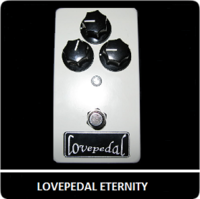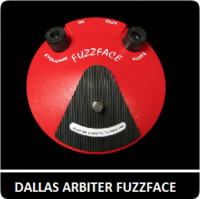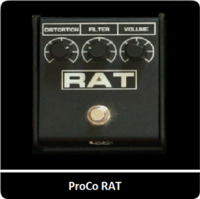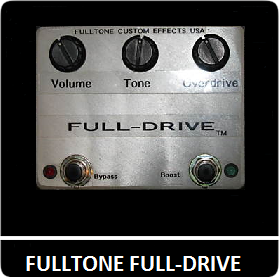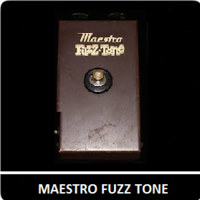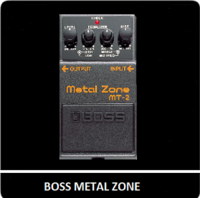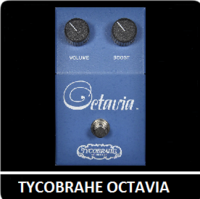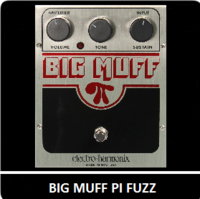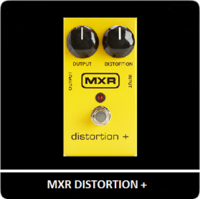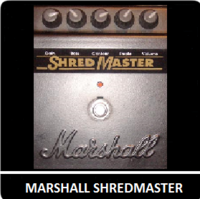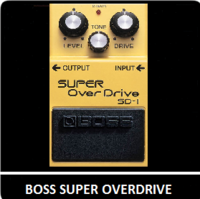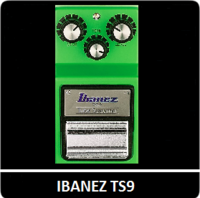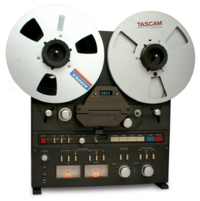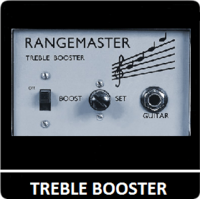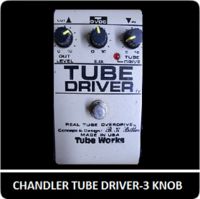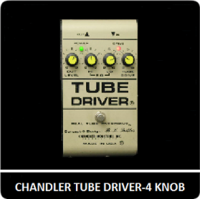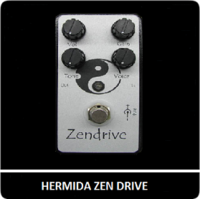Always consult the official Owners Manuals first
Drive block
Jump to navigation
Jump to search
Note: forum member CBoothe01 contributed to this page.
THIS WIKI PAGE IS UNDER CONSTRUCTION
Contents
- 1 Drive: supported by which Fractal Audio products?
- 2 Drives and X/Y switching
- 3 Drives and CPU usage
- 4 Knobs on real pedals versus virtual knobs
- 5 Fuzz pedals, buffers and impedance
- 6 Drive models based on the Tube Screamer circuit
- 7 Using a Drive block for tighter tones
- 8 Turning an Amp block into a Drive (Axe-Fx II only)
- 9 Pictures of the modeled pedals (by MDProd)
- 10 Parameter: Mix
- 11 Parameter: Sample Rate Deduction
- 12 Parameter: Slew Rate
- 13 Simulating other pedals
- 14 Drive models
- 14.1 BB Pre (based on Xotic BB preamp)
- 14.2 Bender Fuzz (based on Sola Sound/Vox Tone Bender)
- 14.3 Bit Crusher
- 14.4 Blues OD (based on Marshall Bluesbreaker)
- 14.5 Esoteric ACB (based on Xotic AC Booster)
- 14.6 Esoteric RCB (based on Xotic RC Booster v1)
- 14.7 Eternal Love (based on Lovepedal Eternity)
- 14.8 Face Fuzz (based on Dallas Arbiter Fuzz Face)
- 14.9 FAS Boost
- 14.10 FAS LED-Drive
- 14.11 Fat Rat (based on modded Pro Co Rat)
- 14.12 FET Boost
- 14.13 FET Preamp (based on BOSS FA-1 Fet Preamp)
- 14.14 Full OD (based on Fulltone Full-Drive 2)
- 14.15 Hard Fuzz
- 14.16 Master Fuzz (based on Gibson Maestro Fuzz-Tone FZ-1A)
- 14.17 Micro Boost (based on MXR Micro Amp)
- 14.18 Mid Boost
- 14.19 M-Zone Dist (based on BOSS MT-2 Metal Zone)
- 14.20 Octave Dist (based on Tycobrahe Octavia)
- 14.21 Pi Fuzz
- 14.22 Plus Dist
- 14.23 Rat Dist (based on Pro Co RAT)
- 14.24 Ruckus
- 14.25 SDD Preamp
- 14.26 Shred Dist
- 14.27 Super OD
- 14.28 T808 MOD
- 14.29 T808 OD
- 14.30 Tape Dist
- 14.31 Timothy
- 14.32 Treb Boost
- 14.33 Tube Drv 3-knob
- 14.34 Tube Drv 4-knob
- 14.35 Zen Master
Drive: supported by which Fractal Audio products?
- Axe-Fx II: yes.
- AX8: yes.
- FX8: yes.
Drives and X/Y switching
- The two Drive blocks in the Axe-Fx II, FX8 and AX8 support X/Y switching.
Drives and CPU usage
- If CPU load is an issue, take note which Drive type you select. Some types, such as Face Fuzz, Eternal Love and BB Pre, use a lot more CPU than other types.
- CPU usage is amplitude dependent. CPU usage will change when you hit the strings when one or more Drive blocks exist in the preset (bypassed or engaged).
Knobs on real pedals versus virtual knobs
- If the original pedal has a single Tone knob, use the Tone control in the model for authentic results.
- If the original pedal has active EQ controls (Bass / Mid / Treble), use the Bass/Middle/Treble controls in the model for authentic results.
- Cliff's comments:
- "The Tone control works the same as the modeled pedal. The Bass, Mid and Treble controls are a generic EQ that can be used in addition to the Tone control to further shape the sound." source
Fuzz pedals, buffers and impedance
- Cliff: "The Fuzz in the Axe-Fx reacts as though there is a buffer in front of it (because there is). It's a limitation inherent to all modeling products. I modeled it using a nominal source resistance. I forget what I used for the source resistance but it was probably around 100K ohms. To really simulate it you would need a controller to simulate the changing output impedance of the guitar." source
Drive models based on the Tube Screamer circuit
- Models based on the Tube Screamer circuit: (source)
- T808
- T808 Mod
- Super OD
- Full OD
- BB Pre
- Eternal Love
- Zen Master
- LED Drive
Using a Drive block for tighter tones
- Put a Drive block before the Amp block, with minimal Gain and maximum Level. Turn down the Drive in the Amp block. This makes the bass tighter. This works well in particular with Tube Screamer-based Drive types.
- Alternatively use a PEQ and copy and paste the HiCut and LowCut frequencies from the Drive block. This will apply the same EQ-ing but without the gain and toll on CPU.
Turning an Amp block into a Drive (Axe-Fx II only)
- Insert a 2nd Amp block before the main Amp block, set its Supply SAG to zero ("p.a. off") to switch off power simulation, set Presence/HiCut to neutral ("5"), and you made yourself yourself a virtual preamp pedal. Set the main Amp block to a fairly clean tone for best results. Works great with the Euro Blue/Red/Uber and 5153 amp types.
- Sources:
Pictures of the modeled pedals (by MDProd)
Parameter: Mix
- Mix at 0% in a Drive block is not equivalent to "true bypass" (100% dry signal). Also, the Mix control operates prior to any tone control. This lets you mix some dry in with the distorted signal but still maintain overall tone control. Some people like turning down the effects’s Mix level to 80% or lower to increase transparancy and decrease buzziness.
- Cliff's comments:
- "The models let clean through even with the mix at 100%. It depends on the diodes though as to how much clean is mixed. Our models are based on the most common versions." source
Parameter: Sample Rate Deduction
- Use Sample Rate Reduction for intentional aliasing to create creative effects.
Parameter: Slew Rate
Simulating other pedals
- Klon Centaur:
- Currently there's no Fractal Audio model of the Klon Centaur boost/overdrive pedal. Here are some guidelines to approach its sound:
- http://forum.fractalaudio.com/threads/klon-based-drive.112409
- http://forum.fractalaudio.com/axe-fx-ii-discussion/85654-klon-capture-ir-most-common-clean-boost-settings.html
- FET Boost: Drive 5-6, Tone 4-5, Level 5-7, Clip Type Si Diode, High Cut 6500, Mid 1.00.
- PEQ: band 1 Shelving2, 150 Hz, 0.707, -12, band 5 Shelving2, 2253 Hz, 0.707, -12, Level 1.5.
- Currently there's no Fractal Audio model of the Klon Centaur boost/overdrive pedal. Here are some guidelines to approach its sound:
- Solo Dallas Schaffer. More information
- Maxon OD808.
Drive models
BB Pre (based on Xotic BB preamp)
- Based on: Xotic BB preamp, an overdrive pedal with a preamp stage. "BB" actually stands for "Bluesbreaker", Marshalls 2x12 combo amp used by Eric Clapton in John Mayall’s Bluesbreakers (see the Blues OD model below). The pedal can act as a boost at low gain settings, turn a clean amp into a rock monster, and add smoothness and compression to an already overdriven tone. There are various versions of the BB preamp, such as Andy Timmons' limited-edition signature version.
- Original controls: Gain (model: Drive), Volume (model: Level), active Bass and Treble.
- Cliff's comments:
- "Works just like the real thing here. Tons of gain, too much IMO but I didn't design it." source
- Yek's write-up.
Bender Fuzz (based on Sola Sound/Vox Tone Bender)
- Based on: classic Tone Bender circuit, made famous by Jimmy Page of Led Zeppelin (Whole Lotta Love) and Eric Clapton. One of the first fuzz pedals to be released in the UK in the mid 1960s. There are numerous versions and circuits, and it has been copied and cloned by many. It's not been disclosed which circuit has been modeled by Fractal Audio, so far known.
- Original controls: Level (model: Level), Attack (model: Drive).
- The Clip Type in the model is set to "Hard" (instead of germanium) because of the pedal's hard clipping.
- Read the comment at the top of the page regarding fuzz models, buffering and impedance.
- Yek's write-up.
Bit Crusher
- Not based on a particular pedal (so far known). It can be used to warm up a sound or to deliberately degrade a signal to create a lo-fi or "broken" sound, using the Bit Reduce and/or Sample Rate parameters.
- Yek's write-up.
Blues OD (based on Marshall Bluesbreaker)
- Based on: Marshall Bluesbreaker (pedal). Designed in the 90s to pump up the volume and simulate the mildly overdriven valve sound of the 2x12 Marshall combo amp used by Eric Clapton in John Mayall’s Bluesbreakers. The model is probably based on the original edition (Mk1).
- Original controls: Gain (model: Drive), Tone (model: Tone), Volume (model: Level). The later (less praised) MkII version added a Mode switch.
- Yek's write-up.
Esoteric ACB (based on Xotic AC Booster)
- Based on: Xotic AC Booster ("Almost Clean"), a thick, light-to-medium overdrive pedal.
- Original controls: Gain (model: Drive), Volume (model: Level), active Bass and Treble controls.
- Yek's write-up.
Esoteric RCB (based on Xotic RC Booster v1)
- Based on: Xotic RC Booster ("Real Clean"), a transparent boost pedal with additional gain en EQ. The model is based on the original version of the pedal (v1).
- Original controls (v1): Gain (model: Drive), Volume (model: Level), active Bass and Treble controls.
- Yek's write-up.
Eternal Love (based on Lovepedal Eternity)
- Based on: Lovepedal Eternity, a popular and expensive boutique overdrive pedal, which can also operate as a boost or as a treble booster using its tone ("Glass") knob. There have been various editions.
- Original controls: Level (model: Level), Drive (model: Drive), Glass. The "Glass" knob on the pedal controls the amount of presence in the tone, from dark to boosting treble.
- Yek's write-up.
Face Fuzz (based on Dallas Arbiter Fuzz Face)
- Based on: Dallas Arbiter Fuzz Face, as used by Jimi Hendrix, David Gilmour and Eric Johnson. Originally based on Sola Sound's Tone Bender (see above).
- Original controls: Volume (model: Level), Fuzz (model: Drive).
- Read the comment at the top of the page regarding fuzz models, buffering and impedance.
- Yek's write-up.
FAS Boost
- Cleanish boost, a custom model designed by FAS to boost vintage amps like Plexis.
- Cliff's comments:
- "It's not based on anything. It's my take on an ideal boost pedal." source
- Yek's write-up.
FAS LED-Drive
- Based on: a custom model, based on the Tube Screamer circuit and LED clipping.
- Yek's write-up.
Fat Rat (based on modded Pro Co Rat)
- Based on: modified Pro Co RAT, fuller and smoother.
- See Rat Dist model.
- Yek's write-up.
FET Boost
- Based on: a gentle, smooth clipping booster with tone controls.
- Yek's write-up.
FET Preamp (based on BOSS FA-1 Fet Preamp)
- Probably based on: Boss FA-1 Fet Preamp, a rare FET preamp (not a pedal), used by The Edge (U2).
- Original controls: active Bass and Treble controls (Model: Bass and Treble), Volume (model: Level), Flat/Low Cut switch (6 dB at 200 Hz).
- Yek's write-up.
Full OD (based on Fulltone Full-Drive 2)
- Based on: Fulltone Fulldrive 2, which takes overdrive beyond the Tube Screamer.
- Original controls: Volume (model: Level), Tone (model: Tone), Overdrive (model: Drive), Boost switch (more, depending on version).
- Cliff's comments:
- "The Full OD model is based on a Fulltone Fulldrive 2". source
- Yek's write-up.
Hard Fuzz
- A hard-clipping, 60s-style fuzz. So far inknown if the model is based on a real pedal.
- Read the comment at the top of the page regarding fuzz models, buffering and impedance.
- Yek's write-up.
Master Fuzz (based on Gibson Maestro Fuzz-Tone FZ-1A)
- Based on: Gibson Maestro Fuzz Tone FZ-1A, used in Satisfaction by The Rolling Stones.
- Original controls: Volume (model: Level), Attack (Model: Drive).
- Read the comment at the top of the page regarding fuzz models, buffering and impedance.
- Yek's write-up.
Micro Boost (based on MXR Micro Amp)
- Based on: MXR Micro Amp Boost, a clean booster.
- Original controls: Gain.
- Yek's write-up.
Mid Boost
- A custom model, designed by FAS to boost the mids.
- Yek's write-up.
M-Zone Dist (based on BOSS MT-2 Metal Zone)
- Based on: Boss MT-2 Metal Zone, popular for extreme gain settings.
- Original controls: Level (model: Level), Distortion (model: Drive), Bass, Middle, Treble.
- Yek's write-up.
Octave Dist (based on Tycobrahe Octavia)
- Based on: Tycobrahe Octavia, an octave distortion.
- Original controls: Boost (model: Drive), Volume (model: Level).
- [... Yek's write-up].
Pi Fuzz
- Based on: Big Muff Pi fuzz.
- Original controls: Volume, Tone, Sustain (Drive).
- EHX website and video: "Hendrix and Santana were among the first to get a piece of the Pi, and for over 40 years the Big Muff Pi has been defining the sound of rock guitar. Revered by contemporary guitarists and rock legends for its rich, creamy, violin-like sustain, from Pink Floyd to The White Stripes, everyone still wants a piece of the Pi!"
- Use it with a clean amp tone.
- Information about the Big Muff.
- Cliff's comments:
- "Our model uses a shelving filter but it's not based on a Ram's Head version." source
Plus Dist
- Based on: MXR Distortion+
- Original controls: Level, Distortion.
- Website and videos: "Germanium-powered, soft-clipped distortion. Go from warm, tubey overdrive to gnarly fuzz. This little yellow box is responsible for those great distortion sounds heard on so many classic recordings. Set the Distortion control low and crank the Output knob to drive the front end of your amp for cool blues tones, or max out the Distortion knob for classic early ’80s hard rock tone. There still isn't any distortion unit on the market that sounds like the Distortion+."
- Demo
- Sounds a little fuzzy when used with a clean amp tone. Use it with a dirty amp tone.
- This model relies on the Variable Clip Type, this is by design.
- The model was matched again to the real pedal in Quantum 5 firmware.
Rat Dist (based on Pro Co RAT)
- Based on: Pro Co Rat.
- Original controls: Distortion (model: Drive), Filter (model: Tone), Volume (model: Level).
- Cliff's comments:
- "The filter knob has been modeled but it works backwards." source
- Yek's write-up.
Ruckus
- Based on: Suhr Riot distortion.
- Original controls: Distortion, Level, Tone, Voice (not modeled).
- Website and videos: "Riot is a versatile high-gain distortion pedal with the sonic characteristics and touch sensitivity of a high quality 100 watt tube amplifier. Riot will transform a clean amp into an authoritative rock tone that inspires all of your favorite riffs."
- The Tone control is a treble roll-off. Don't hesitate to turn it up.
- The Ruckus was designed to be used with a clean amp.
- Demo by Pete Thorn
- The model was matched again to the real pedal in Quantum 5 firmware.
SDD Preamp
- Based on: preamp in Korg's SDD-3000 digital delay, made famous by The Edge.
- Original controls: none.
- "Offers a natural reaction to individual playing styles, as well as slightly saturated and compressed tone."
- Korg website
- With Drive at around 1.50 this Drive block will add chime to any clean tone.
Shred Dist
- Based on: Marshall Shredmaster.
- Original controls: Gain, Bass, Contour (Tone), Treble, Volume.
Super OD
- Based on: Boss SD-1 Super OverDrive.
- Original controls: Level, Tone, Drive.
- Website
- Information on Bossarea.com: "The SD-1 has been around for a very long time and has gone almost unchanged from its conseption back in 1981. The pedal contains an asymmetric overdrive circuit that responds very well to the player's picking force. It produces a dynamic and smooth overdrive effect well suited to any type of rock music. The SD-1 is also popular as a booster pedal for valve amplifiers. Turn the distortion down and the level up and connect it in front of the amplifier. The higher input level will push the input valve of the amplifier harder producing more distortion from the amp itself. The SD-1 is well suited to do this because it maintains the natural tone from the guitar."
- The model was matched again to the real pedal in Quantum 5 firmware.
T808 MOD
- Based on: captures the most popular Tubescreamer overdrive mods. More bass, more gain range, more transparent.
T808 OD
- Based on: Ibanez TS9.
- One of the most famous and cloned pedals of all time, mainly because of its use by SRV.
- Original controls: Drive, Tone, Level.
- Cliff's comments:
- "The T808 drive is NOT based on the Ibanez TS-808 but rather the TS9 model." source
- Wikipedia: "The Ibanez Tube Screamer is a guitar overdrive pedal, made by Ibanez. The pedal has a characteristic mid-boosted tone popular with blues players. The "legendary" Tube Screamer has been used by guitarists such as Stevie Ray Vaughan to create their signature sound, and is one of the most popular and most copied overdrive pedal".
- The model was matched again to the real pedal in Quantum 5 firmware.
Tape Dist
- Based on: the clipping of an overdriven reel-to-reel tape deck.
- Original controls: none.
- Try the Tape Dist block AFTER the Amp block to add bite to the tone.
- Cliff's comments:
- "It's just a generic tape distortion simulator. I used an old Ampex EQ curve basically."
- "The tape drive is meant to be used anywhere in the chain. I've been using it after the amp to fatten things up and it work really well for that. Be careful though, the drive block is mono so you can get phase issues if you put it after a stereo effect."
Timothy
- Based on: Timmy pedal by Paul Cochrane. It's a transparent boost/overdrive pedal.
- Original controls: Gain (model: Drive), Volume (model: Level), Bass cut (model: Bass), Treble cut (model: Tone).
- Cliff's comments:
- Video.
Treb Boost
- Based on: Dallas Rangemaster.
- Original Controls: Boost (on/off,) Set.
- Wikipedia: "Widely used in the late 1960s and early 1970s. Hard to find today, the Rangemaster sound is still sought after, and many clones based on its extremely simple circuit have been made commercially and by hobbyists. Unlike most of today's clones, the original Rangemaster was not a pedal, but a box meant to be placed on top of the amplifier. The circuit makes use of a single OC71 or OC44 germanium transistor. One can hear the Rangemaster in many Queen songs, a good example being Procession from Queen's second album, Queen II. Tony Iommi is another Rangemaster user, and can be heard using one modified by a roadie on many Black Sabbath recordings. An alleged early user of the Rangemaster was Eric Clapton, who supposedly used one around the time of John Mayall's Blues Breakers with Eric Clapton album, in combination with a 1960 Gibson Les Paul Standard and a Marshall Bluesbreaker. This connection is often used to market modern clones of the circuit and contributed a lot to its popularity in recent years, even though there is no evidence that Clapton ever used one."
- Premier Guitar article
- Also try the Mid Boost as an alternative to Treb Boost.
- Cliff's comments:
- "Boost was a switch and engaged the effect. Set was the amount of boost and is equivalent to Drive." source
Tube Drv 3-knob
- Based on: Tube Driver (3 knobs), a pedal that actually contained a 12AX7 tube.
- Original controls: Level, Tone, Drive.
- Website
- B.K. Butler talking about the Tube Driver: "There is NO Chandler Tube Driver… Never was a Chandler Tube Driver! They just marketed it for a while.” But I do understand the confusion caused when I allowed their name to be included on my product. My lesson was well learned… enough said." source
- Cliff's comments:
Tube Drv 4-knob
- Based on: Tube Driver (4 knobs), a pedal that actually contained a 12AX7 tube.
- Original controls: Level, Hi, Lo, Drive.
- Notes: see TUBE DRV 3-KNOB.
- Cliff's comments:
- "The idea with the 4-knob version is to use the tone controls on the EQ page and leave the single Tone knob at noon. You can still use the Tone knob if you want but the model is only accurate with the knob at noon."
- "Both of my actual pedals go silent with the Drive set to zero as would be expected looking at the design." source
Zen Master
- Based on: Hermida/Lovepedal Zendrive, made famous by Robben Ford.
- Original controls: Volume, Gain, Tone, Voice.
- Website: "The standard in dynamic, touch-sensitive overdrive pedals. Cut through the mix with the incomparable Zendrive. Inspired by a legendary guitarist, the Zendrive delivers blues, country, jazz and fusion tones associated with some of the finest, most costly amplifiers in the market. Four knobs control the overall volume, gain, tone and voicing of the pedal. At lower settings, the pedal offers extremely light overdrive sounds reminiscent of tube amps set near the “sweet spot.” At higher settings, the Zendrive increases in gain and sustain, producing tasty overdrive and low distortion tones."
- Also known as the pedal that sounds like a Dumble.
- To emulate the pedal's Voice control, use Low Cut. source
- The model was matched again to the real pedal in Quantum 5 firmware.
